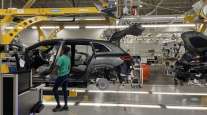Special to Transport Topics
Preparing New Technicians for Success
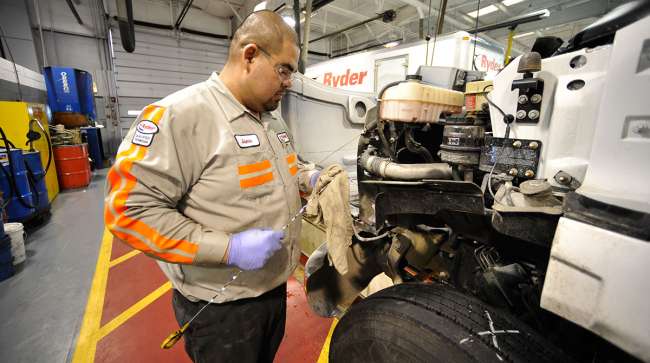
[Stay on top of transportation news: Get TTNews in your inbox.]
Diesel technician jobs are becoming more high-tech and specialized as truck manufacturers progressively adopt digital componentry. The profession concurrently is suffering from a worker deficit, and fleets find themselves hiring recruits fresh from technician school who can perform basic maintenance or repairs, but who need significant on-the-job training to ensure success in the full scope of the position.
“I would say, generally, they’re not ready… but it’s our job to make them ready,” said Holly Gerke, director of technical training at Penske Truck Leasing. “When we have the opportunity to develop the right habits … early in their career, that sets us up better to have very strong technicians later.”
Numerous employers suggest that new graduates ably perform general, uncomplicated tasks — such as oil changes, brake maintenance, tire maintenance and air conditioner fixes — but they’re not yet knowledgeable and experienced enough to do complex, specialized jobs including engine or transmission work.
Penske has more than 8,600 technicians and assigns entry-level employees to preventive maintenance. “Beyond that is where the knowledge gap really starts to materialize. … They have a great understanding of theory, but the real-world application is where they have to condition behaviors,” Gerke said.
Ryder System Inc. likens new technician training to “a highway, and it has several on-ramps,” said Renee Fisher, director of maintenance learning and development. Ryder has four status levels for its 6,300 technicians, and new employees are onboarded slightly differently depending on their previous schooling, experience and strengths.
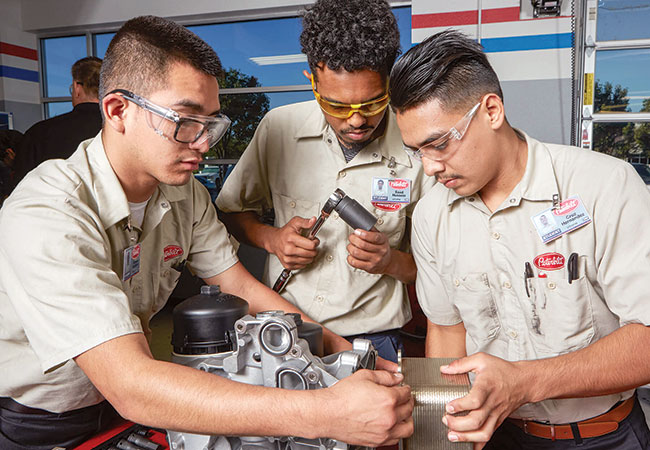
Students at the Peterbilt Technician Institute program get hands-on experience. (Univeral Technical Institute)
The company aims for each new technician to undergo at least 40 hours of job training regardless of the level at which he or she is hired.
Some fleets require longer-term or ongoing training, especially considering the difficulty of retaining the vast amount of information new employees must absorb.
Penske’s technicians typically train in multiple circuits that occur approximately every two weeks for the first year or two of employment.
Information is disseminated in digestible increments “rather than drinking from a firehose,” Gerke said.
“Our entry-level technicians need their training spread out over time, versus bringing them in for two weeks and teaching them everything they need to know,” she said. “This approach truly drives skills, not just knowledge.”
Fleets stress the importance of continuous education throughout technicians’ careers to stay current on new equipment and maintenance best practices.
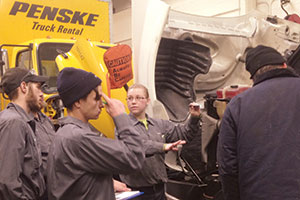
Penske Truck Leasing assigns entry-level technicians to preventive maintenance before advancing them to more specialized tasks. (Penske)
“Just look at what happened in the last five years — all the safety software out there and components talking to one another. It’s incredible how fast things are changing,” said Joe Puff, vice president of truck technology and maintenance at NationaLease. “Schools can only do so much training, and the rest of it is up to the employer or employee to take it to the next level.”
Employees should commit themselves to ongoing training and improvement, he said. Fleets invest money in employee training, and technicians should invest in the appropriate training to upgrade their skills and certifications, in addition to qualifying for pay raises.
“Employees have to be willing to learn and give time back to better their career,” Puff said. “Make it clear when you hire technicians that their training is a condition of employment.”
Employers might consider incentives such as recognition, bonuses or pay increases for employees who successfully complete training or continuous learning sessions.
Ryder offers a $50,000 prize annually to the individual who wins its “Top Tech” competition; the initiative emphasizes the value of technical training to ensure quality vehicle maintenance.
Training improves behaviors not just for new graduates, but also for long-tenured technicians, industry participants say. Periodic instruction helps longtime technicians learn product updates and new technologies. Plus, procedures differ slightly from company to company, and newly hired technicians of all experience levels must understand and comply with their current employer’s standards.
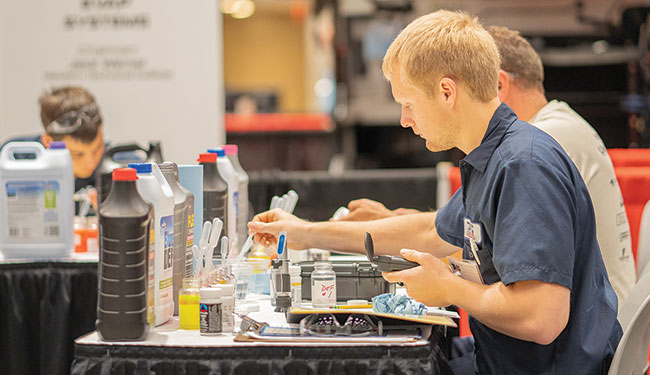
The Technology & Maintence Council's TMCFutureTech competition aids aspiring technicians in sharpening their skills. (Jeremy Kirkpatrick/American Trucking Associations)
Special programs exist for new recruits who attained relevant technician experience in different workforce sectors. For example, Ryder partners with the U.S. military on its Pathway Home program, which trains individuals who are close to completing their service how to be a diesel truck technician. The 12-week, fast-track training occurs at participating military bases and builds on service members’ military experience.
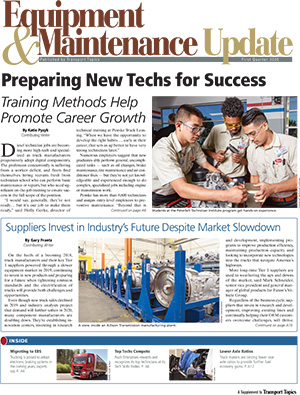
- Preparing New Technicians for Service
- Electronic Braking Systems Expected to Gain Traction
- Suppliers Invest in Industry's Future Despite Market Slowdown
- Technician Career Development: An Endless Journey
- LEDs Represent Future of Truck Headlamps
- Rear-Axle Ratios Are Still Moving Downward
- Tractor-Trailers at a Tipping Point
Managers should conduct a thorough assessment of their maintenance shop’s needs before implementing any technician training programs, especially due to the evolving nature of the profession, Puff said. Training should be based on data about individuals’ weaker skills and how to improve them. One strategy is to set monthly goals and meet regularly with technicians, even for just five minutes, to determine additional skills needs and evaluate progress.
“Assess how many repairs you need to do in each particular category. [Next], look at your technicians and assess each one’s qualifications and where you have gaps. … Then you can target specific areas for training,” Puff said. “It provides a wealth of information [and] not just one piece of the puzzle.”
Sources said new technicians need the most training with aftertreatment systems, diagnostics and electrical systems. They especially need to hone their knowledge of how one manufacturer’s components interact with other brands’.
With all the differences that exist between modern products, “you’ve got to refer to OEM-specific protocols to diagnose problems or make repairs,” Puff said.
Most OEMs offer some form of technician training. But product-specific training raises another challenge: The industry’s move toward more intricate componentry is prompting specialization instead of general technician jobs.
“If you send someone to an OEM’s aftertreatment training program, they’ll be really good at diagnosing and repairing that specific component but not necessarily good at another OEM’s diagnostics,” Puff said. “The technology changes we have seen in recent years are unprecedented, and the average technician can’t be all things to all products.”
In part one of a two-part exploration of autonomous technology today, our latest RoadSigns podcast revisits conversations with CEOs Alex Rodrigues of Embark and Cetin Mericli of Locomation. Hear them explain what testing automated trucks and developing platooning technology has taught them about the road ahead — and get new perspective with host commentary. Listen to a snippet from Rodrigues above, and to hear the full episode, go to RoadSigns.TTNews.com.
Fleet managers frequently find themselves deciding whether training in-house employees on specialized tasks is more economically viable than sending the components to dealers for repairs.
Transmission repairs, for instance, might only occur once or twice per year, and maintenance managers therefore might not believe running technicians through a multiweek transmission training program yields an adequate return on investment. Thus, outsourcing transmission repairs to a supplier could be more economical.
Fleets acknowledge that employing multiple information-delivery methods helps to reach different learners. This presents opportunities to incorporate technology into the learning process. Video and online programs are becoming more common for OEM and general technician training. Some larger transportation businesses have in-house creative and production teams to create instructional videos and online courses.
Diesel technicians can access many online training and reference resources with their tablets or phones while in the shop, instead of leaving their workspace to complete a training module.
Webinars and video chats can reach large numbers of trainees without the expense of conducting on-site training at multiple locations. They also enable employees to immediately ask questions, whereas traditional training videos do not.
Augmented and virtual reality tools further advance innovative training methods.
Design Interactive’s AR tool, Augmentor, overlays training information onto a technician’s real-life shop environment via a mobile device or AR headset. Providing virtual hands-on training helps employees retain knowledge better than solely relying on classroom learning, said Matt Johnston, division head for commercial solutions at Design Interactive.
“The value is having the information handy,” he said. “With a headset, your hands are free to keep working so you can watch the video and perform tasks in real time.”
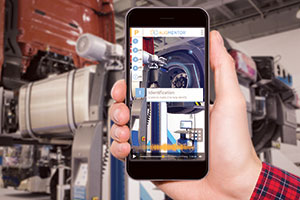
Design Interactive's Augmentor tool provides virtual hands-on training through augmented reality overlays. (Design Interactive)
The tool also aids efficient knowledge transfer from experienced technicians to rookies. Veteran technicians can capture videos of themselves performing each step of a maintenance or repair job, and with the touch of a button, they are able to upload the videos to the cloud for others to view in Augmentor.
“They use the platform to create content,” Johnston said. “The procedure has been recorded so anyone who wants a refresher can watch the video again.”
The technology can assist fleets, suppliers and OEMs with reducing trainers’ travel time and costs. Numerous fleets report that they’re exploring such training innovations.
Despite technology’s benefits, sometimes conventional practices such as in-person mentorships prevail as industry standards.
“Having an on-the-job mentor is very, very important,” Fisher said. “You can’t beat hands-on training, but you can supplement it and get it done a little quicker in these different environments with augmented reality.”
Some fleets offer formal mentorships in which they pair new hires with seasoned employees, whereas others leave it up to employees to identify a suitable mentor. Trainees might pair with one mentor for the duration of their onboarding, or they might be placed with several mentors who have expertise in different skills.
“[Trainees] watch what the mentor is doing and experience different scenarios that you’re not going to get on your own right out of technical school,” Fisher said.
Although managers agree that new technicians need on-the-job training, the educational solutions and implementation strategies are plentiful.
“I don’t feel that there’s any one solution today. That’s why I feel strongly that you first have to do an assessment,” Puff said.
Want more news? Listen to today's daily briefing:



